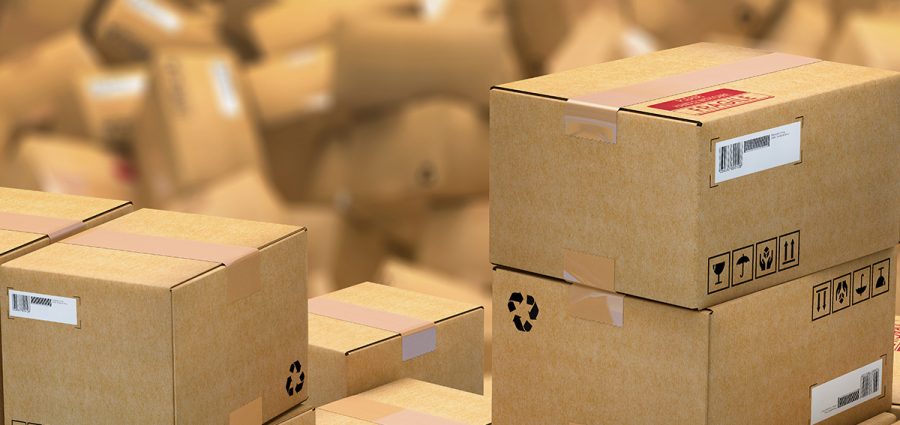For decades, distributors have earned much of their profit by offering a wide variety of products available quickly and easily to customers. Check out your own website: Are you bragging about how many products you carry, your branch locations, your great delivery capabilities?
If that’s a major part of your value proposition, you’d better start innovating, because your customers are going to have a lot more choices soon. Many of your accounts have a proliferation of options already.
Factors Driving Commoditization:
- Amazon announced it’s buying 20,000 delivery vans to handle “last-mile” fulfillment for shipments from the company and millions of its marketplace sellers. It’s also building a $1.5 billion, 3-million square foot cargo hub that can handle up to 100 aircraft. By comparison, UPS, which has been in this business for 112 years, has around 120,000 trucks, vans, aircraft, etc. of all kinds — worldwide.
- Distributors have been increasing the amount of business that ships directly from their manufacturers to customers for a long time. Today, countless manufacturers have the ability to ship small orders to customers, bypassing distributors entirely. We’ve taught our suppliers how to make us less essential.
- Distribution center construction has skyrocketed. Dodge Data & Analytics reports that total annual warehouse construction starts grew from 49 million square feet in 2010 to nearly 300 million square feet in 2018. That’s a lot of space competing to fulfill customer orders.
- Online marketplaces like Amazon Business and others are developing assortments of hundreds of million SKUs.
- Digital technology is making it ever-easier for anyone to sell products online. Gone are the days where you had to buy servers and build your own transaction-management and IT security systems.
This combination of factors — explosive growth of delivery and distribution capabilities, the proliferation of SKUs available from marketplaces, plus new technologies — means that distributors can’t just count on assortment and availability as a means of generating sales and income much longer.
The bottom line is that nearly every product you sell (or something functionally equivalent) will soon be readily available, online, from other sellers who can deliver quickly, too. That means more price competition and transparency from sellers who offer products the way an increasing number of your customers want to buy: online.
Your Customers are Increasingly Millennials – or Younger
Millennials are the first generation made up of “digital natives” – people who didn’t grow up in a world without the Internet. The University of Minnesota’s IPUMS USA program (ipums.org), estimates that 40% of all workers were millennials and “Generation Z” in 2017 and will be 75% of all the workforce by 2025.
These are your customers and they’re quick to adopt any technology, such as artificial intelligence. To a growing number of your customers, who have been exposed to amazing and rapid technological change their entire lives, the idea that someday they’ll abandon their keyboards and order primarily by voice or through phone cameras is simply an obvious next step in the world of purchasing.
When these customers look for products, they aren’t going to call sales reps, ISRs or walk into a local branch. Increasingly, they’re going to turn to a smart speaker or phone and say, “Alexa, order me the NTN bearings that fit the #12 packaging machine.” Alexa’s going to know what the product is, be able to suggest alternatives and interact with an ERP to cut the PO and schedule the delivery.
I described this solution to a group of college students at a major university recently and they all nodded. Soon after, I went through the same discussion with a long-time (i.e., old, like me) engineer I know and he forcefully told me why it will never work.
Which camp are you in? If you’re with the engineer, then you don’t understand what AI can really do. If you agree with me, the question is, “What are you and your company going to do about it?”
If you don’t have top-flight technical talent, a state-of-the-art ERP and the ability to implement the AI your new customers will prefer to use to place orders, then that business will go to your more-enlightened competitors.
You’ll also need to rely more on services to add value in ways that are hard to digitize. But most distributors bundle services with products. They don’t have a service development process. They don’t know how to price and sell services. Do you even have SKUs for services? If not, you’re already behind.
The Big Won’t Eat the Small — the Fast Will Eat the Slow
MDM counts more than 240,000 wholesale distributors in the U.S., managing more than 6 trillion dollars of revenue. It’s an enormous market defended by a highly fragmented and relatively unsophisticated group of incumbents. No wonder companies such as Amazon are entering the market and growing like crazy. These companies offer solutions our new generations of customers prefer and, frankly, many distributors aren’t putting up much of a fight.
New entrants, a changing workforce, the commoditization of our core value proposition and advancing technology are going to drive consolidation in distribution. Companies that move fast — enabled by an enlightened view of the future and a willingness to overhaul how they add value to customers — will thrive. The oblivious or slow-moving will be gobbled up or go under.
Disruption brings not only threats but also opportunities. It takes a visionary and enlightened leader to succeed when industries go through a transformation. Are you up to the challenge?
This blog is No. 9 of MDM’s 10 Most-Read Blogs of 2019. Each week as the year winds down, we will share these most popular posts until we reach No. 1. View No. 10 here.
Related Posts
-
Blindly following a competitors lead or treating every customer the same are two common mistakes…
-
In a recent MDM webcast, Navigating the New Now as a Distributor, Epicors Emma Vas…
-
The Index offers distributors a weekly quantified view into how other distributors in the industry…



